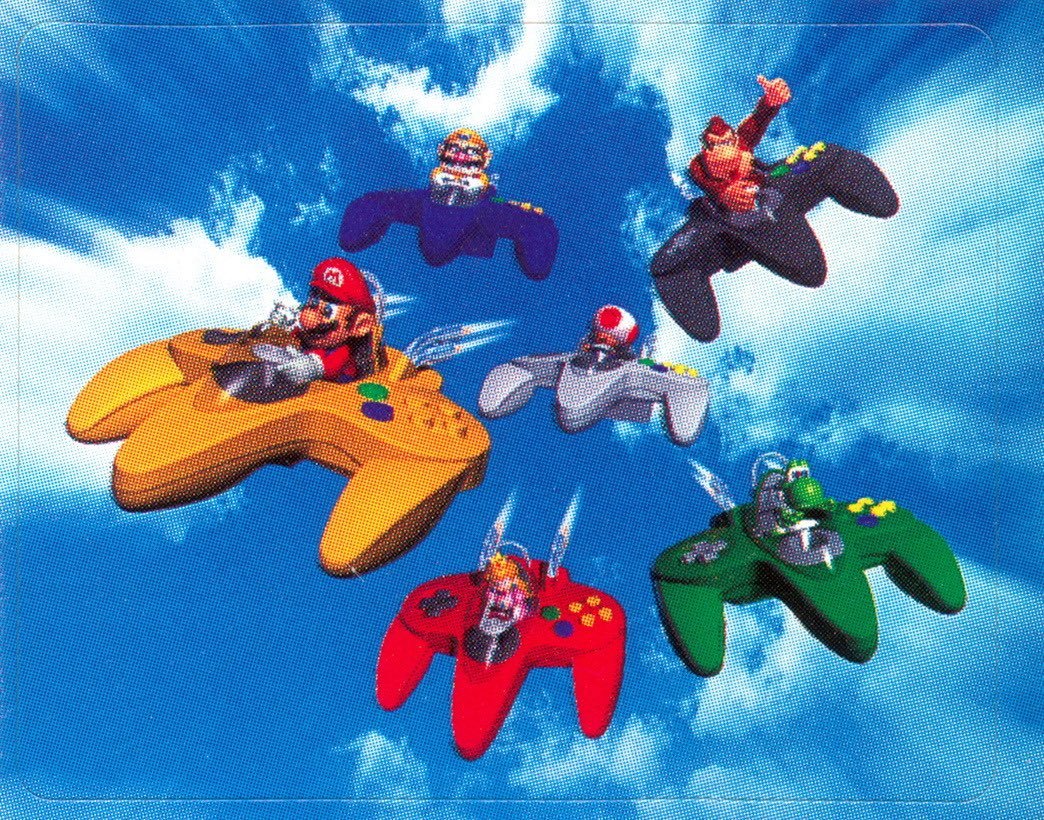Anatomising the N64
Anatomising the N64 isn’t hard when you can peer into the bottle green motherboard, the nucleus of hypnotic rotating graphics, and the labyrinth that allows you to fire off that blue shell.
Nintendo Spaceworld 99 Cover
For as long as I can remember, we had four opaque controllers. The grey one had a busted analogue stick which ended up in the pitiful hands of the youngest sibling, or whoever failed to call dibs on one of the functioning controllers. It inhibited any attempt at a left-turn on Mario Kart 64, accelerating you into impending doom on Rainbow Road. The stick was probably haemorrhaged from playing said map. I, like many others, have fond memories of the N64 console.
The Nintendo 64, released in 1996, is shrouded in 3D rendered mystique. The quirky design choices of the console are, I believe, remarkably cutting edge and haven’t really been replicated meaningfully elsewhere. The clunky aesthetics forced us to sacrifice practicality for the sake of beauty. The console was set to become a muse of the vaporwave movement, but in 1996 she didn’t know that yet!
On a mission to restore the console over lockdown, I looked into buying another memory cartridge and some new controllers as my supplies were looking rough, aged and abused.
For the uninitiated, the N64 controller feels as though you’re handling a smoothly contoured pitchfork. The triple-pronged design is fitted with predictable trigger buttons under each index finger, with an out-of-pocket trigger located on the centre prong of the trident. The bop-it anatomy of the controller demands dexterous hand choreography from the beholder.
In my restoration process, I knew I had to invest in the coveted, ice-blue transparent designs. The guts of the machine are revealed to you, hardwired veins enclosed within indifferent plastic. Its organs are compartmentalised. Anatomising the N64 isn’t hard when you can peer into the bottle green motherboard, the nucleus of hypnotic rotating graphics, and the labyrinth that allows you to fire off that blue shell.
The antique value of the N64, aggregated by the nostalgia-trip value, has led to a lucrative trade of vintage console profiteering. Prophetic individuals who have retained boxed special editions of the console or their original cartridges are sitting on revenue – with an unboxed copy of Ocarina of Time eclipsing the $200 price point. The frigid cruelty of supply and demand!
Buying second-hand is the way to go, which is what I had to do to replace our lent-out-but-never-returned copy of Goldeneye 64. Who can forget a chiselled Pierce Brosnan splashed across the cartridge, arguably the summit of any Bond’s career. Daniel Craig could not have pulled this one off. The soundtrack is comically good, thrusting you through corny espionage as you play through a dubious Cold War backdrop. You direct a first-person Bond through dismantling syndicates in maps that can consist of a solid 8 varying textures. At times you don’t know whether to laugh at the heinous aiming controls, or the poorly rendered Lenin statue in the Saint Petersburg mission.
Now that the N64 occupies its own spot on the entertainment unit, it's been living with a copy of Mario Kart 64 inside it. This game succeeded immeasurably on the sensory front with its hypnosis-inducing graphics and soundtrack. My roommate and I will involuntarily erupt into flirty humming renditions of the Moo Moo Farm or Kalimari Desert soundtrack. Emotions would run high – the euphoric yellow star to the desolate failure of hearing the losing music spite your losses. Being one of the first four-player split screen console games, I like to have it on display.
The console hosted a canon of seminal games which set visceral precedent, particularly on the storytelling front, some which are yet to be matched or surpassed. I couldn’t write this article without mentioning Conker’s Bad Fur Day, a darling of the reddit hive-mind. You play as Conker, a fourth-wall breaking, binge-drinking squirrel, aiding his journey from the pub to see his girlfriend. The game staggers between wry wit and crude comedy – the perfect (hypothetical) cocktail for any precocious child who was able to con their parents into buying them the game. To complete a level was to retrieve another punchline – you assist a bee in “pollenating” a large-breasted sunflower. Perhaps the game’s legacy has become reductive to its libido, toilet humour, and the ironically juvenile aesthetics, but was quite boundary-pushing by way of graphics and of original narrative. This squirrel has become the artistic muse for thousands of questionable tattoos and many an utterance of “he’s just like me.” An original cartridge of the game will set you back upwards of $300.
The Nintendo64 promises you a visceral experience, sewn with ritual. Before you fire up the machine, you fix the composite cables into your television. You blow dust out of the cartridge as you would puff on an ageing dandelion. A game protrudes obnoxiously out of the heart of the console. A red light glows.

